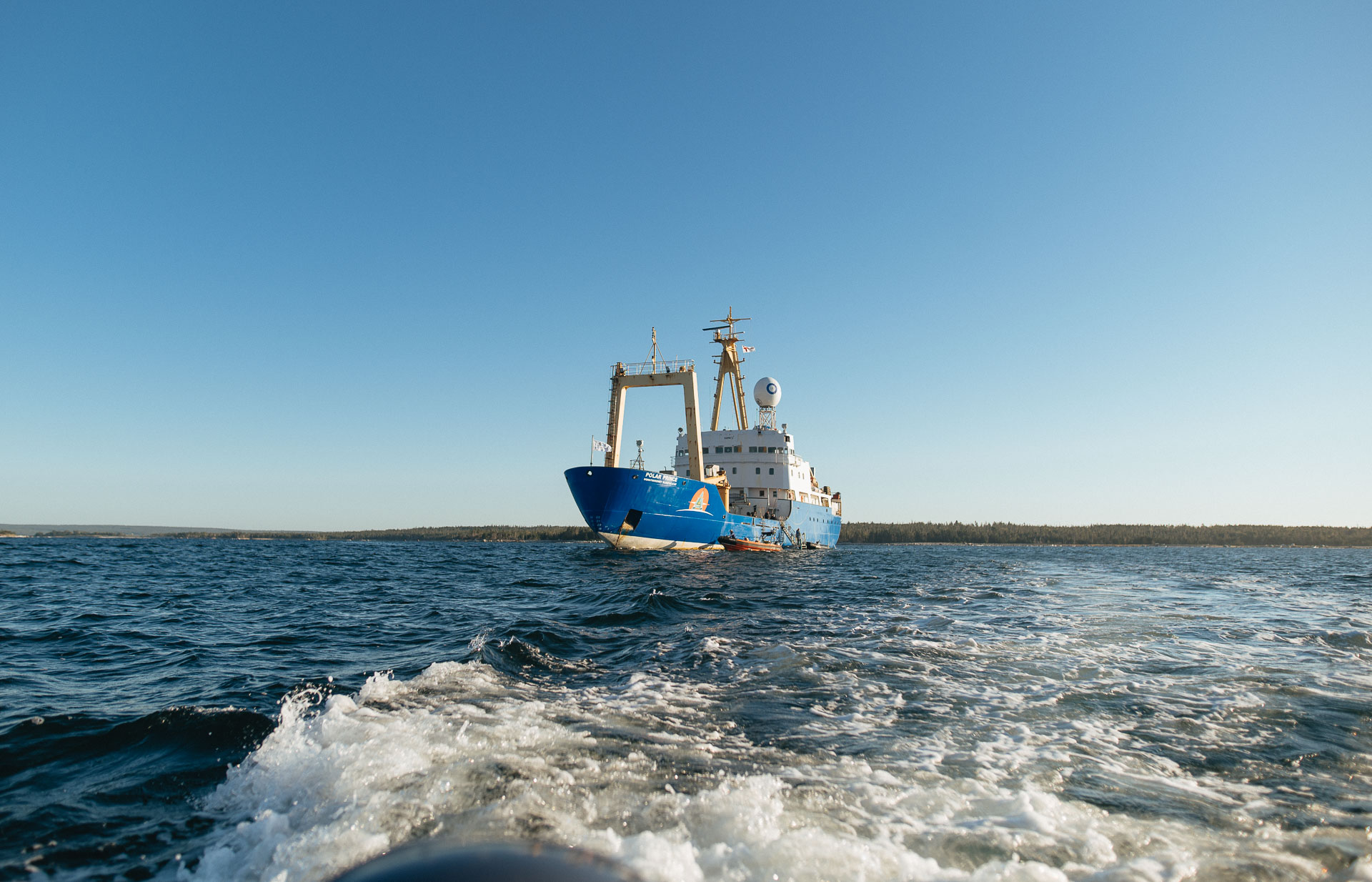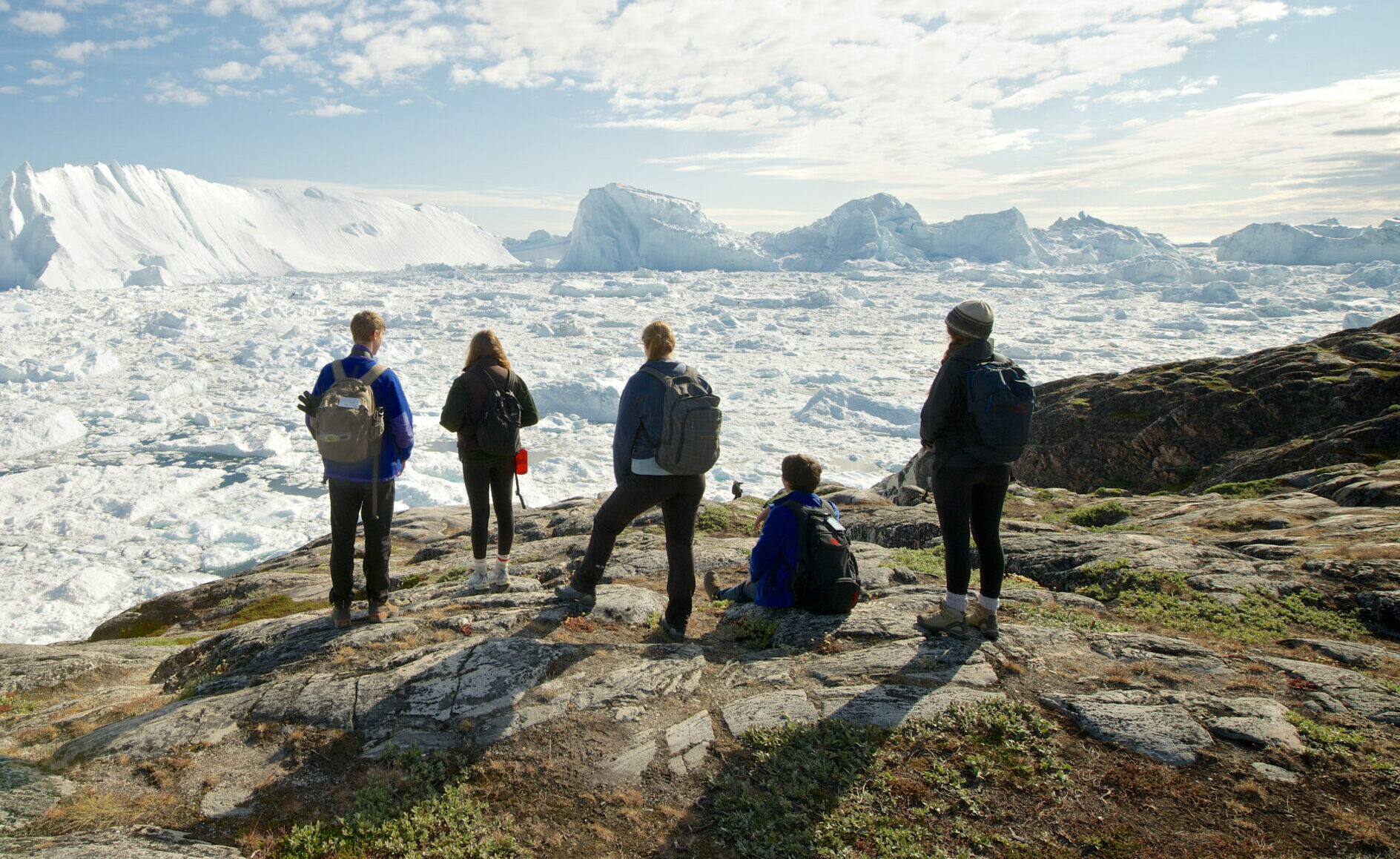Ocean Conservation Expedition: September 27-29
As our expedition began to wind down on Thursday, all aboard were a bit weary — a sign we’ve been living life pretty full.
As expedition leader Geoff Green noted at our last briefing Wednesday night, these last few weeks have been a magical time in so many ways, with long full days of adventure and exploration. That makes it all the more emotional when a journey like this comes to end.
But what a journey it has been!
Despite contending with a hurricane and wet, dreary conditions over most of the last week, we didn’t miss a single place we tried to visit – a track record that extends across the entire expedition.
We spent the last few days island hopping along the Eastern Shore Archipelago. This cluster of islands is one of the last remaining intact and ecologically rich groups of its size in North America, and many of them are largely untouched. With their rich eelgrass and kelp beds, as well as salt marshes, these islands provide important habitat for many marine species, while several area estuaries do the same for endangered Atlantic salmon.

Given the nesting and foraging grounds it provides for shorebirds and seabirds, the archipelago has been deemed an ecologically and biologically significant area. But without protection, the islands remain vulnerable. The Nova Scotia Nature Trust, the province, the Nature Conservancy of Canada and the Canadian Wildlife Service are all working together and with private owners to enhance protections and create new designations, with the ultimate goal of creating a network of protected islands in this area.
The Nova Scotia Nature Trust’s “100 Wild Islands Legacy Campaign” launched in 2014 with the goal of protecting the entire archipelago, and so far, 85% of the 100 Wild Islands have been protected.
This has also been identified as an area of interest for Fisheries and Oceans Canada, which is the first step in creating a marine protected area.
Landing on many of these islands is rare, which is why our science teams were keen to get on shore. On Tuesday, we started the day by heading to Big Halibut Island, followed by Beaver Island in the afternoon. In both cases, the landings were challenging, but all made it ashore unscathed. Before long, our dive team was in the water collecting specimens, while our science teams headed to the ponds and shorelines to collect core samples and eDNA. Along the way, we discovered there were deer on Big Halibut and countless cranberries on Beaver – surprises on both fronts.
It was a day best described as “wet,” complete with choppy seas. But out on the ocean, you have to earn your days – and we certainly did.

Last Wednesday was another challenging day weather wise – but all hands rose to the occasion. We started the day by going ashore at Wolfe Island in the fog. We landed on a beautiful beach and set about combing it while our science teams headed to – what else – nearby ponds to collect samples. This beach had heavy kelp and seaweed cover which had been left there in Hurricane Fiona’s wake.
Our afternoon excursion was our last shore visit of the expedition – and a bit of a homecoming for Munju Ravindra of Parks Canada. For years her parents had owned Layboldt Island before donating it to the Nova Scotia Nature Trust as part of its 100 Wild Islands campaign.
After a long zodiac ride from the ship, there were porpoises and seals to greet us at the shore. It was another wild landing, this one on kelp-covered rocks, but after a string of cloudy, foggy days, suddenly there was blue sky and sunshine.
“I feel like this island is touched by divinity in some way. It’s just such a special place. Coming back here is really emotional. I’m moved by it. And I’m really grateful Geoff (Green) was willing to make the effort to come here. He was a little dubious at the beginning, but he started to see the magic of it. And I feel like the island really delivered. It is one of the more beautiful places we’ve stopped.” – Munju Ravindra
In addition to beaches and mudflats, the island is full of rare plants, something that was captured in a plant survey, conducted by Nick Hill, who we met on Brier Island.
Munju’s parents bought the island with friends at a tax auction back in the 1960s to protect it from future possible development.“They were just people who were interested in nature and the wild, and they had worked hard to help develop Kejimkujik National Park,” she says. “As kids, we would come here camping and had a relationship with the island, but it wasn’t like we felt ownership over it. It was more that we felt we were stewards of it for whoever wanted to use the place. We never banned anyone from coming. Locals continued using it, kayakers came here.”
The family talked for many years about donating Layboldt to the Nature Conservancy of Canada and the Nova Scotia Nature Trust, but the timing was never right. Then the 100 Wild Islands campaign got underway, the family thought it was perfect.

Instead of selling to a private owner for more than a million dollars, their island ended up being one of the early anchor islands for the project.
“It seemed like the natural fit for the family to work towards a conservation ethic, as there was an opportunity to use it as leveraging power to engage other people in Nova Scotia,” Munju says.
“We were able to keep it out of the hands of developers and now we’ve been able to transfer it to an organization that can continue to keep it wild forever, as it has always been.”
Chris “Old Man” Luedecke broke out his banjo and played us a mini concert on the rocks while brave souls took to the sea for a swim and others explored the landscape. It was a perfect and meaningful shore visit to wrap up our expedition. The cherry on top was the stunning sunset we were treated to back on the ship.

We anchored off Owl’s Head until about 3 a.m. Thursday and then started for Halifax Harbour. It was a busy morning on the water as several cruise ships, a container ship and a military vessel were also headed to the same place we were. The Polar Prince is now in Dartmouth. We were all reluctant to leave after so much time together on board, sharing, learning and making connections. As a floating classroom, this ship delivers in spades. And time passes differently at sea: A day spent onboard can feel more like a week, and people you met a day earlier can feel like you’ve known them for years. So needless to say, after a few weeks at sea together on this ocean conservation expedition, we’re a pretty tight crew.





